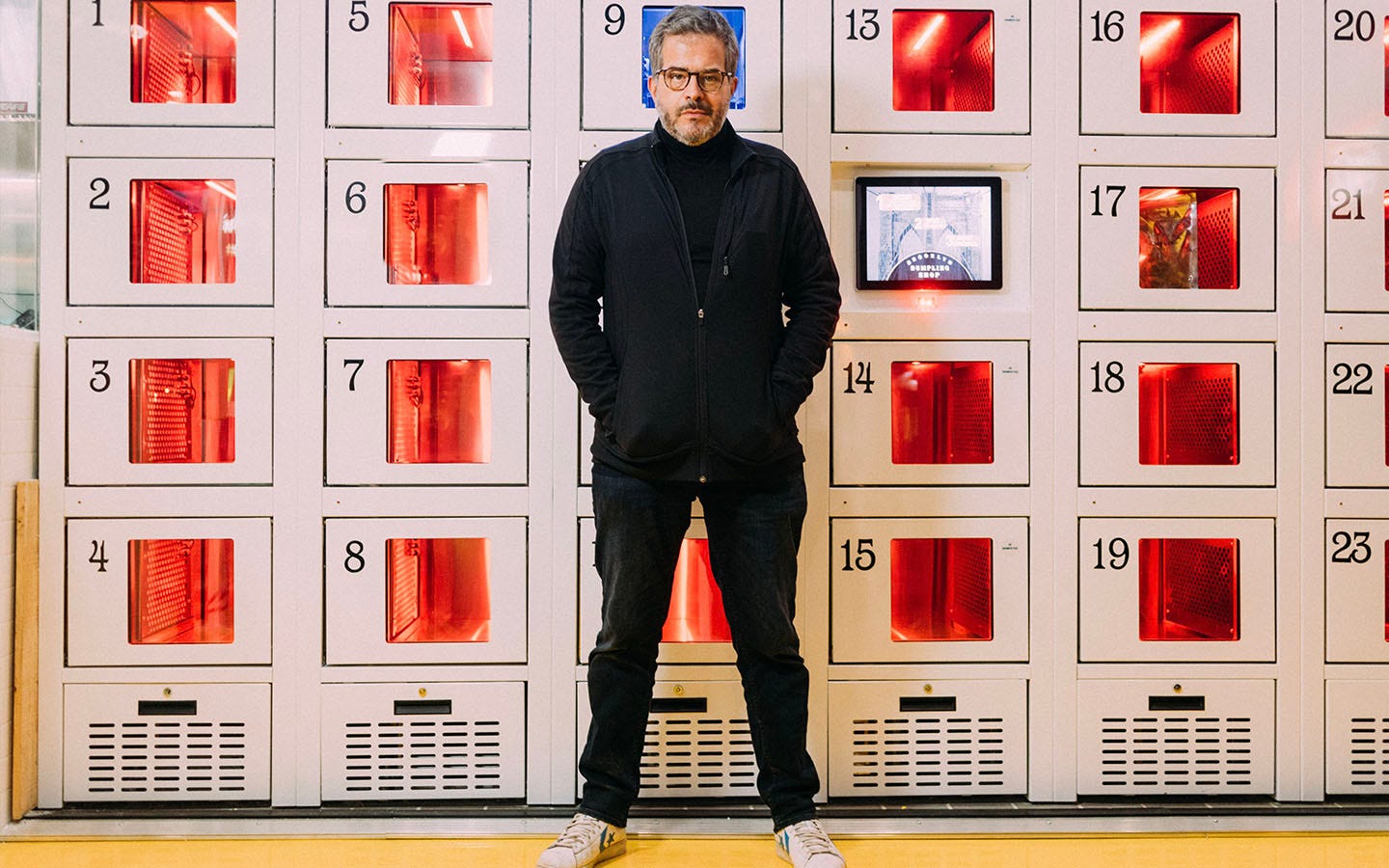Stratis Morfogen on Building the Restaurant of the Future
Business Lunch
Stratis Morfogen grew up in his family’s restaurants, learning the ropes as he worked his way up. An entrepreneur at heart, he struck out on his own, beginning with a concession stand before eventually providing New York City with a number of hits, including the popular Brooklyn Chop House and Philippe Chow. Over the years, he’s built a reputation as a talented forward-thinker, bringing the famed Fulton Fish Market online in 1997 and reimagining dishes from his father’s restaurant into dumplings. Philly Cheesesteak anyone?
Over the last few months, he’s been thinking bigger, snatching up leases in the West Village (14,000 sq ft) and Times Square (25,000 sq ft). MacDougal Street will house Pappas, an homage to the restaurants his family owned and operated in Manhattan, while his destination restaurant Brooklyn Chop House will debut under the lights in Midtown. Despite months of economic headwinds, he believes “great wealth and success comes from down markets. There’s been no better time in decades to take action.”
Recently, he debuted his most “future-ready” concept to-date – the Brooklyn Dumpling Shop in the East Village. The 24/7 self-service storefront reintroduces the Automat, where you can find 32 flavorful dumpling creations, sides like Kung Pao Waffle Fries and a variety of BDS merch – all from the comfort of your phone via the contactless app Tray.
I caught up with Stratis to learn about his strategy, the future of retail and the biggest challenges facing the restaurant industry today.
BoFB: What was the thinking behind your strategy for the BDS Automat?
Efficiency, economics and scalability. The end goal is to bring the industry norm payroll of 30 percent to 15 percent of gross revenue. If we achieve that goal, then we'll have revolutionized the industry.
BoFB: What have you learned since opening your first location?
We've learned that there is a lot of excitement. People really love it, especially 12 - 40 year olds. Senior citizens become a learning curve since it can seem intimidating but we have greeters in the front available to walk them through it, which makes the people who aren’t as tech savvy really interested in the technology.
BoFB: What has changed in the way you think about the function and purpose of a restaurant?
What’s great about it is when you embrace the automat and online ordering. The fast-casual industry norm takes about 4-8 minutes. Using our technology and our website you could be in and out in less than a minute. The guests have full control of payment, scheduling, menu selection, all of which is controlled by your smartphone.
BoFB: How much are you thinking about the practical solutions that self-service can provide versus the fun or cool factor of the retail experience?
The experience we’ve created with the automat makes it both fun in addition to practical. You have to see the smiles on people’s faces when they can actually control the automat, we’re banking on the consumer. They’re applying their intelligence to the automat and it’s really fun to watch.
BoFB: With no check-out areas and less human capital, is this the future of retail?
It’s the future of retail entirely. Today, if I know I can go to a jeans store, order from a phone and know that I can get it at an automat with a facade as a storefront in record time. We’re allowing the consumer to have full control of the experience from start to finish.
BoFB: As you look to the restaurant industry in 2021, what are the biggest challenges and opportunities for restaurants today?
The restaurant's biggest challenges are labor. Our version of the automat, we created in 2019 when we had no idea of the labor shortage ahead. Our automat really plays well into today’s times even though ours was conceptualized before the industry was turned on its head. We never thought the labor industry would be as thin as it is today.


